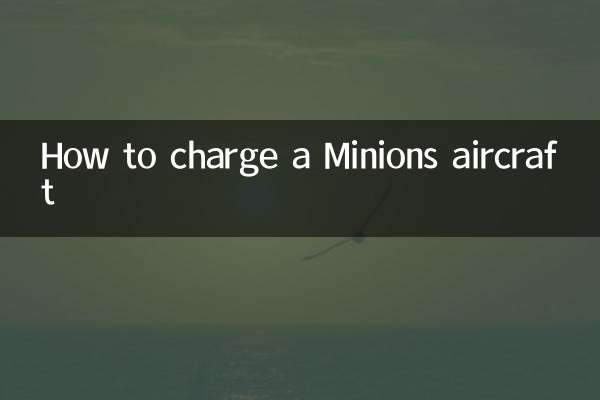Title: How to make a remote control plane by yourself
introduction
With the development of technology, DIY remote-controlled aircraft has become the new favorite of many technology enthusiasts and handicraft experts. This article will combine popular topics and hot contents on the Internet for the past 10 days to provide you with a detailed guide to making remote-controlled aircraft, covering material selection, assembly steps, debugging skills and other contents, helping you easily realize your flight dream.

1. Hot topics and hot content on the entire network (next to 10 days)
Here are the recent hot topics and statistics related to DIY remote-controlled aircraft:
| Hot Topics | Searches (10,000 times) | Main discussion platform |
|---|---|---|
| DIY remote control aircraft tutorial | 12.5 | B station, YouTube |
| Recommended materials for remote control aircraft | 8.7 | Zhihu, Tieba |
| 3D printing remote control aircraft | 6.3 | Reddit, GitHub |
| Remote control aircraft debugging skills | 5.9 | TikTok, Kuaishou |
2. Materials required for making remote-controlled aircraft
Here is a list of essential materials for making a basic remote-controlled aircraft:
| Material name | quantity | Remark |
|---|---|---|
| Light wood or foam board | 1 piece | Body main material |
| Brushless motor | 1 | Recommended KV1000-2000 |
| Electronic speed regulator (ESC) | 1 | Match the motor power |
| Remote Control and Receiver | 1 set | 4 channels or more |
| Lithium battery | 1 piece | 11.1V 2200mAh |
| propeller | 2 | One fore and one fore and one fore and one fore and one fore and one fore and one fore and one fore |
3. Detailed explanation of the production steps
1. Design the body
Draw a fuselage sketch based on flight requirements, or download open source design drawings (such as templates provided by FliteTest). Light wood or foam boards are cut into wings, tails and fuselage parts.
2. Assemble the power system
Secure the brushless motor to the head position and connect the electronic speed governor and the battery. Pay attention to the matching of the rotation direction of the motor and the propeller.
3. Install the control system
Fix the receiver in the middle of the fuselage and connect the servo (controlled aileron, elevator and rudder). Test whether the remote control signal is normal.
4. Debugging and test flight
Check the center of gravity position (usually located 1/3 of the front of the wing) and gradually adjust the angle of the rudder surface. Choose a windless environment for the first test flight and take off at low speed to observe the attitude.
4. Frequently Asked Questions and Solutions
| question | reason | Solution |
|---|---|---|
| The plane deviates to the left | Motor torque or rudder surface imbalance | Adjust the rudder fine-tuning or increase the right pull angle |
| Battery life is too short | Insufficient battery capacity or large motor load | Replace high-capacity battery or reduce propeller size |
| Remote control signal interrupt | Improper position of the receiver antenna | Extend the antenna perpendicular to the fuselage |
5. Safety precautions
1. Stay away from crowds and buildings while flying and comply with local regulations.
2. When charging the battery, please take care of it to avoid overcharging.
3. It is recommended to take the first flight in an open field and wear goggles.
Conclusion
Through the above steps, you can make a personalized remote-controlled aircraft by yourself. Combined with 3D printing technology or open source design in recent hot topics, you can further upgrade your works. Remember to share flight videos to social platforms and share your experiences with more enthusiasts!

check the details

check the details